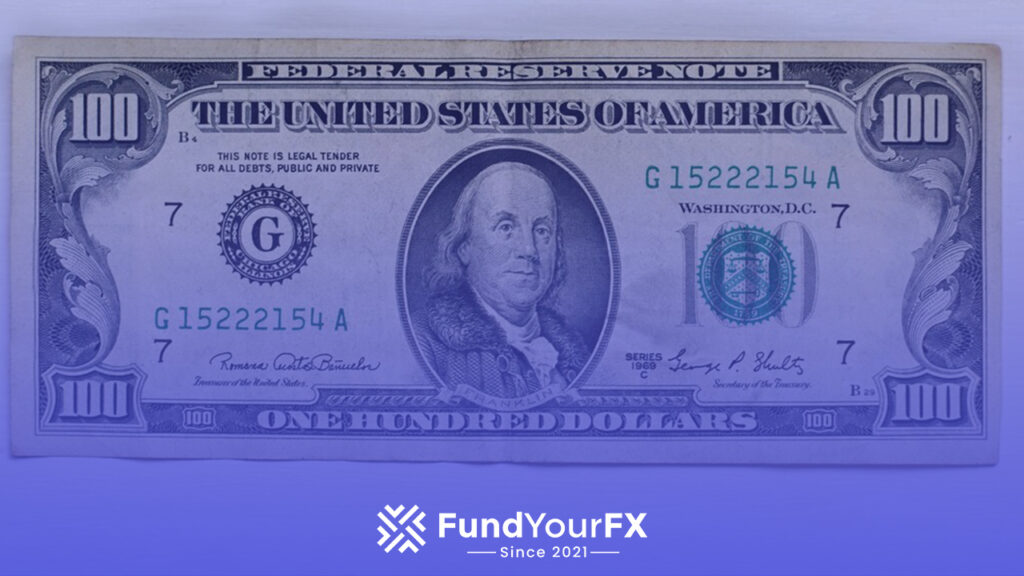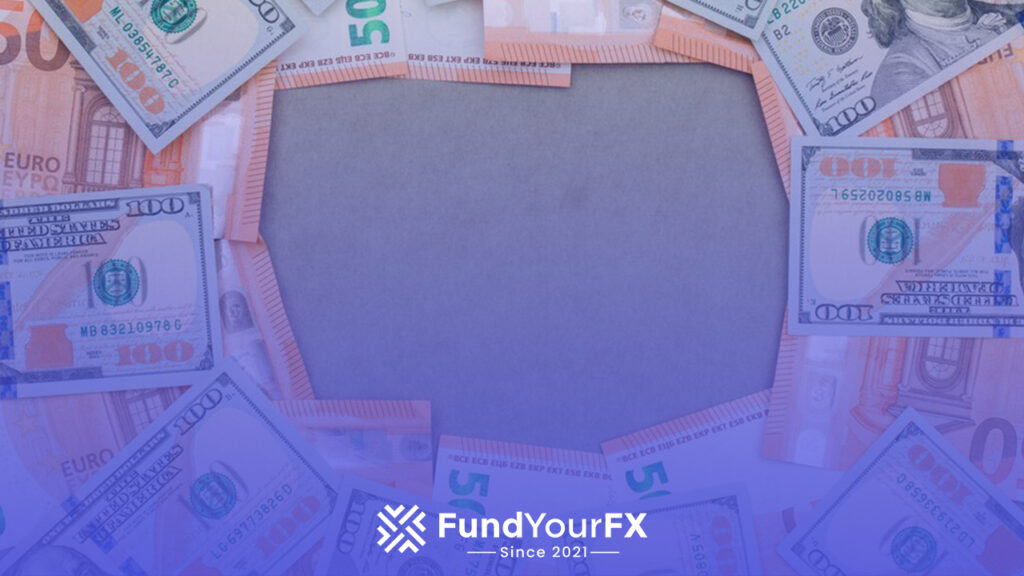The forex market is dominated by a select group of currency pairs that facilitate the majority of trading activity. These pairs, including EUR/USD and USD/JPY, exhibit high liquidity and narrow spreads, making them attractive to traders. Economic indicators and central bank policies heavily influence their movements. Understanding these dynamics is essential for effective trading strategies. However, the complexities behind these relationships warrant a deeper exploration into each pair’s unique characteristics and trading implications. Here are the best forex pairs to trade in 2025.

1. EUR/USD (Euro/US Dollar)
The EUR/USD currency pair, representing the euro against the US dollar, stands as the most traded financial instrument in the forex market, accounting for approximately 24.0% of daily forex transactions as of 2019.
This pair reflects considerable euro trends influenced by the European Central Bank’s monetary policies, while dollar fluctuations are often driven by Federal Reserve actions.
Traders closely monitor economic indicators from both regions, as they greatly impact exchange rates.
High liquidity results in narrow spreads, making the EUR/USD an attractive option for both novice and experienced traders seeking to capitalize on market movements in global finance.
2. USD/JPY (US Dollar/Japanese Yen)
Following the discussion of the EUR/USD currency pair, attention now turns to USD/JPY, which represents the US dollar against the Japanese yen.
This currency pair, often referred to as the “gopher,” accounts for a significant portion of daily forex transactions. Yen trends are influenced by Japan’s economic indicators and Bank of Japan interest rate decisions, leading to notable currency correlations with other major pairs.
Traders actively monitor these factors to anticipate price movements. The USD/JPY’s high liquidity, driven by the yen’s trading volume in Asia, makes it an essential instrument for forex enthusiasts seeking to capitalize on global market fluctuations.
3. GBP/USD (British Pound/US Dollar)
GBP/USD, commonly referred to as “cable,” is one of the most actively traded currency pairs in the foreign exchange market, representing the British pound against the US dollar.
This pair plays an essential role in reflecting the performance of the British economy relative to the United States. The exchange rate is influenced by various factors, including economic indicators and geopolitical events.
Additionally, interest rates set by the Bank of England and the Federal Reserve greatly impact currency valuations. Traders monitor these interest rate differentials closely, as they can lead to fluctuations in the GBP/USD exchange rate, affecting trading strategies.
4. AUD/USD (Australian Dollar/US Dollar)
AUD/USD, known as the “Aussie,” represents the exchange rate between the Australian dollar and the US dollar, making it a significant currency pair in the foreign exchange market.
The value of the Aussie is influenced by various factors, particularly commodity prices, as Australia is a major exporter of minerals like iron ore and gold.
Consequently, shifts in commodity markets can lead to notable Aussie trends, affecting its exchange rate with the US dollar.
Traders closely monitor these trends and commodity influences to anticipate price movements, making AUD/USD a crucial consideration for those engaged in forex trading.
5. USD/CAD (US Dollar/Canadian Dollar)
The USD/CAD currency pair, commonly referred to the “loonie,” represents the exchange rate between the US dollar and the Canadian dollar, making it a crucial player in the foreign exchange market.
This pair is influenced by various factors, particularly:
- Oil prices: Higher oil prices often strengthen the Canadian dollar.
- Canadian economy: Economic indicators such as GDP and employment rates impact the exchange rate.
- Interest rates: The Bank of Canada and Federal Reserve policies can sway currency value.
- Trade relations: The US-Canada trade partnership considerably affects market dynamics.
Understanding these elements is essential for traders maneuvering this currency pair.
6. USD/CNY (US Dollar/Chinese Renminbi)
USD/CNY, representing the exchange rate between the US dollar and the Chinese renminbi, plays a crucial role in the global foreign exchange market, particularly due to China’s status as a major economic power.
This currency pair constituted 4.1% of daily trades in 2019, reflecting the interconnected nature of China’s economy with global markets. The yuan’s value is considerably influenced by trade tensions between the United States and China, as policymakers adjust strategies to maintain export competitiveness.
Consequently, fluctuations in USD/CNY can serve as indicators of broader economic trends, impacting international trade and investment decisions profoundly.
7. USD/CHF (US Dollar/Swiss Franc)
Often regarded as a safe haven during periods of market volatility, the USD/CHF currency pair, which represents the exchange rate between the US dollar and the Swiss franc, plays a significant role in the foreign exchange market.
Traders often consider the Swiss franc a refuge in uncertain times, leading to notable price movements.
Key factors influencing USD/CHF include:
- Economic stability of Switzerland.
- Interest rate differentials between the Federal Reserve and Swiss National Bank.
- Global market sentiment.
- Political and economic events affecting the US dollar.
These elements collectively shape the behavior of this important currency pair.
8. USD/HKD (US Dollar/Hong Kong Dollar)
In the domain of foreign exchange, the USD/HKD currency pair represents the exchange rate between the US dollar and the Hong Kong dollar, highlighting a unique trading dynamic influenced by specific economic conditions.
The Hong Kong economy is greatly impacted by its currency peg to the US dollar, which stabilizes exchange rates and fosters investor confidence. This arrangement allows the Hong Kong Monetary Authority to maintain a fixed exchange rate within a predetermined band, thereby managing inflation and economic volatility.
As trading volume for USD/HKD has increased, it reflects the growing importance of Hong Kong in the global financial landscape.
9. EUR/GBP (Euro/British Pound Sterling)
The EUR/GBP currency pair, representing the exchange rate between the euro and the British pound sterling, serves as a significant indicator of economic relations between the Eurozone and the United Kingdom.
Its volatility is influenced by various economic indicators, which can affect trading strategies. Key factors include:
- Interest rate decisions from the European Central Bank (ECB) and Bank of England (BoE).
- Economic growth reports from both regions.
- Political developments impacting trade agreements.
- Market sentiment surrounding Brexit negotiations.
Understanding these elements can help traders navigate the complexities of EUR/GBP fluctuations effectively.
10. USD/KRW (US Dollar/South Korean Won)
Trading in the USD/KRW currency pair, which represents the exchange rate between the US dollar and the South Korean won, offers insights into the economic interactions between the United States and South Korea.
This pair accounts for 1.9% of daily forex transactions, reflecting the growing trade dynamics shaped by South Korea’s robust economic growth. Factors such as export performance, technological advancements, and shifts in consumer demand influence the exchange rate.
Additionally, geopolitical events and monetary policies play significant roles in determining the value of the won against the dollar, underscoring the interconnected nature of global financial markets.

Conclusion
In conclusion, the the best forex pairs to trade in the market, including EUR/USD, USD/JPY, and GBP/USD, play an essential role in global financial transactions. These pairs exhibit high liquidity and are heavily influenced by economic indicators and central bank policies. Investors and traders must remain vigilant, analyzing market trends and external factors, to effectively navigate the complexities of currency trading. Understanding the best forex pairs to trade is vital for making informed decisions and optimizing trading strategies in the ever-evolving forex landscape.







